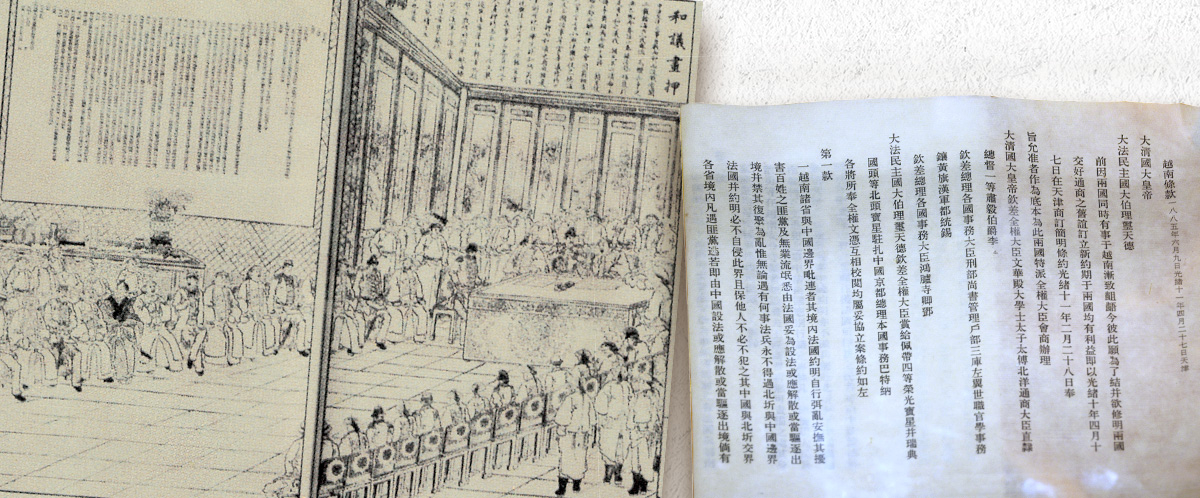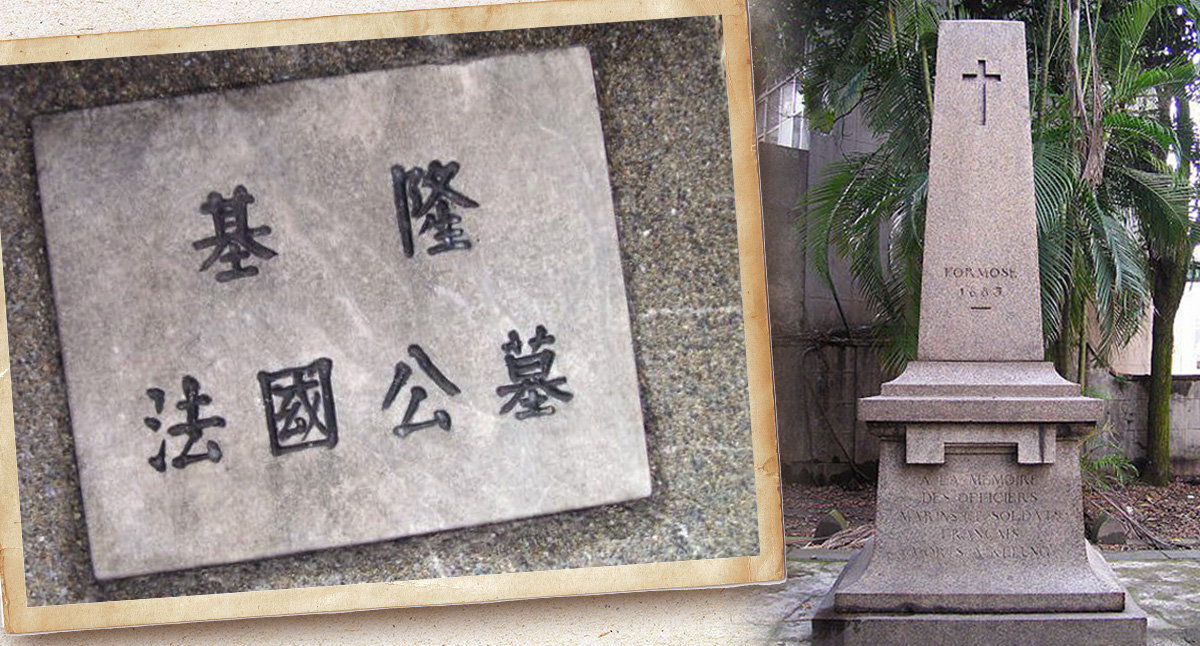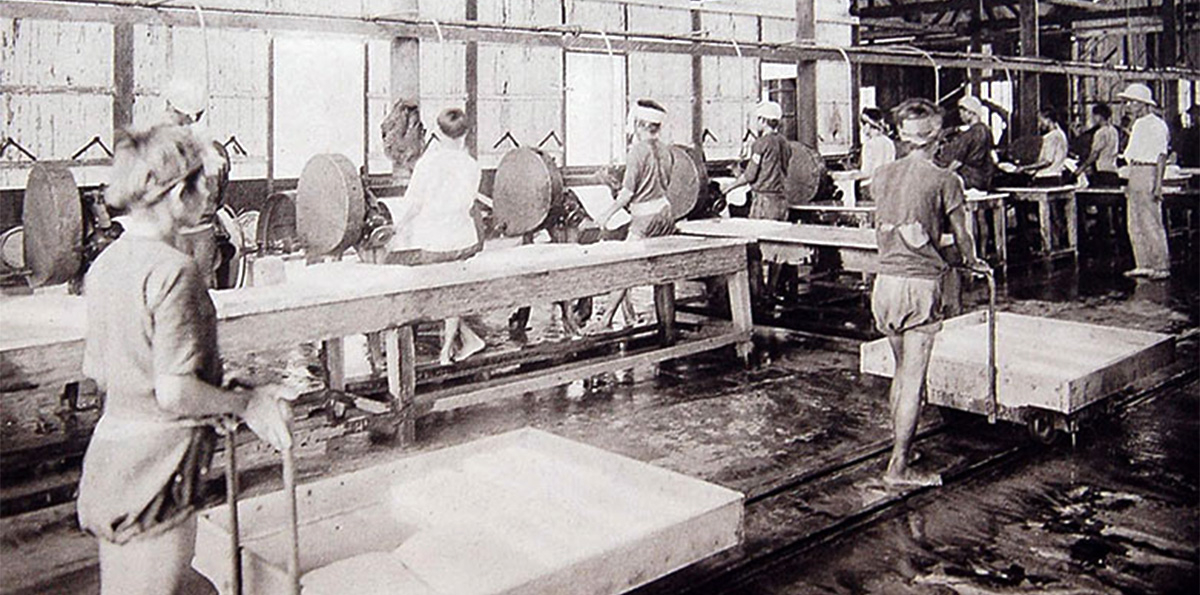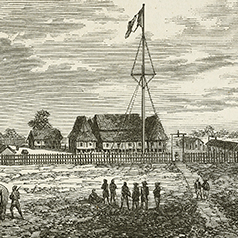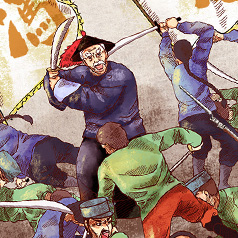Both China and France had wins and losses in the Sino-French War. However, France had the overall upper hand in terms of its dominance in naval battles and the amount of territory captured in the land campaigns. That was basically Tonkin (northern Vietnam) and in effect the entire country. The Qing government, desperate for a chance to make peace, saw the major victory in the Battle of Zhennan Pass (鎮南關) as the perfect opportunity to strike compromises with France and opt out of the war while looking good. Meanwhile, Military setback toppled the then French Prime Minister Jules Ferry and his cabinet. France realised that winning the war would be harder than they had expected. Thus, ending the war by returning to the negotiating table suited both parties.
On 4 April 1885, China and France signed preliminary peace agreements in Paris. On 9 June in the same year, the two parties signed the Treaty of Tientsin (《中法會訂越南條約》, 《中法新約》or《越南條款》), also known as the Treaty of Peace, Friendship and Commerce between China and France, in Tianjin (天津, also known as Tientsin). The 10 articles in the treaty are summarised as follows:
(1) The Qing government shall recognise Vietnam as a French protectorate. Each country shall designate commissioners within six months from the conclusion of the treaty to jointly demarcate the frontier between China and Vietnam;
(2) The China-Vietnam land frontier shall be opened for trade. The two trading posts would be designated on the Chinese frontier in the region north to Bảo Thắng and Lạng Sơn respectively. Tariffs on import and export across the border shall be reduced;
(3) Should China decide to construct railway tracks, it shall address itself to French industry;
(4) The French military shall withdraw from Taiwan (台灣) and the islands of Penghu (澎湖).
Ratifications of the Treaty of Tientsin were exchanged in Beijing on 28 November 1885. From then on, China’s recognition of Vietnam as a French protectorate would leave provinces of Yunnan (雲南), Guangxi (廣西), and other regions in south-western China wide open to foreign interference, which eventually fell under French influence.
|
|
Some referred to the Qing government’s strategy of “opting out of the war while victorious” and signing the Treaty of Tientsin as a move that “handed France a victory it did not win and made itself the loser without having lost”. Is it a valid argument? |
|
|
See answer below. |
The defeat at Zhennan Pass sent the French military into disarray momentarily. Before the Qing military could arrive, the French abandoned the strategic location Lạng Sơn and fled. The incident caused a furor among the public in France that ended with the downfall of the then Prime Minister Jules Ferry and his cabinet. With both parties eager for an end to the war, a truce was called and negotiations commenced. Pictured are Jules Ferry and modern-day Lạng Sơn.
An illustration of the scene of signing the Sino-French Treaty of Tientsin and the treaty document. This treaty signed in 1885 contained 10 articles, most of which were favourable to France. Later, subsequent unequal treaties such as the Convention on Commerce along the Yunnan-Annam (Vietnam) Border between China and France (《中法越南邊界通商章程》), the Convention between China and France Respecting the Delimitation of the Frontier between China and Tonkin (《中法界務條約》), granted even more concessions to France were concluded.
In October 1885, the French force advanced on Lạng Sơn, which the Qing force had won from them in the previous battle, and reoccupied it. According to the Sino-French Treaty of Tientsin, China agreed to relinquish its suzerainty over Vietnam. The French proceeded to retake areas that were lost to the Qing force in the later stage of the Sino-French War until they controlled the whole Vietnam.
According to Article nine of the Sino-French Treaty of Tientsin: “After the present treaty has been signed, French forces will receive the order to retire from Keelung (基隆) and to cease visitation, etc., on the high seas.” In present-day Keelung, there are cemeteries and monuments commemorating the French soldiers who perished in battle or died of illness during the Sino-French War. They have been preserved as a testament to history.
Besides withdrawing from Keelung, Article nine of the Treaty of Tientsin also stated: “Within one month after the conclusion of the present treaty, the Island of Formosa (Taiwan) and the Pescadores (Penghu) will be entirely evacuated by French troops.” Pictured are a monument and a memorial plaque on present-day Magong Isle (馬公島) of Penghu. They are dedicated to Amédée Courbet, the French admiral who died of cholera while stationed there. The article that provided for the removal of the French military from Taiwan and Penghu was one of the relatively advantageous treaty terms to China.
Vietnamese labourers in a French rubber plantation, taken in the late 19th century. By controlling Vietnam, France profited greatly and was able to expand its power and influence in south-western China.
Lancang River (瀾滄江) in 1895. Originating in Qinghai Province (青海), the river flows out of China through Yunnan. Outside China, it is called the Mekong River and known as the greatest river in Southeast Asia. The Mekong discharges into the South China Sea and the Pacific Ocean at a location south of Saigon (present-day Ho Chi Minh City). Since China relinquished its suzerainty over Vietnam, a growing number of French and other Western explorers ventured up the rivers of Mainland Southeast Asia to explore their upstream sections in China. Their infiltration into south-western China exposed the region to foreign influence.
The French missionaries preaching in south-western China and their armed countrymen. In the wake of the Sino-French War, French influence infiltrated south-western China more quickly. Guangxi and Yunnan gradually fell into the French sphere of influence.
The Treaty of Tientsin also granted France trading and railway concessions in various south-western provinces of China. Taking advantage of China’s prolonged weakness, France forced the Qing government to accept the construction of the Kunming-Haiphong Railway (滇越鐵路), a project planned and controlled by France. When the railway commenced operation in 1910, France was able to expand and consolidate its power and interests in south-western China. The photo on the left features the Kunming-Haiphong Railway under construction. The photo on the right is the railway’s famous Faux Namti Bridge (人字橋), also known as the Inverted V Bridge.
The Kunming-Haiphong Railway spans 855 kilometres, of which 394 kilometres lie in Vietnam and 465 kilometres in Yunnan. The railway took seven years to construct and involved 200,000 to 300,000 Chinese labourers recruited from numerous provinces in China. During the construction, tens of thousands of labourers died. Building the Faux Namti Bridge alone cost more than 800 labourers’ lives.
Military Situation map of the Sino-French War
|
|
Some referred to the Qing government’s strategy of “opting out of the war while victorious” and signing the Treaty of Tientsin as a move that “handed France a victory it did not win and made itself the loser without having lost”. Is it a valid argument? |
|
|
This argument is not entirely unfounded as China and France both had wins and losses in the Sino-French War. China managed to repel the French navy in the Battle of Zhenhai and damage them in the defence of Taiwan. China even scored a stunning victory against France in the land campaign at Zhennan Pass. Overall, France still had the upper hand in the war by having achieved more military successes. They had, for example, destroyed China’s modernised fleet and naval administration in the Mawei naval battle; gained a foothold in Taiwan and Penghu on several occasions; won some battles in Vietnam and controlled almost the whole country. Thus, the allegation that China handed France a victory it did not win and made itself a loser without having lost is neither fair nor accurate, as it doesn’t take the performance of both sides in all the campaigns into account. Frankly, whether China made the right choice in “opting out of the war while victorious” is still debatable. After the Battle of Zhennan Pass, French military’s morale was shaken, which caused them to abandon Lạng Sơn without a fight. At peak strength and riding high on momentum China could have gained the leverage necessary to improve the outcome of the later treaty negotiations if it had sought to complete the victory by attacking its fleeing foes, even if it ultimately failed to drive them out of Vietnam. Unfortunately, since the two Opium Wars, the Qing government learned to dread engaging foreigners in war. It also had little understanding of the political situation in France. At that time, France was ruled by the Third Republic, when a succession of government cabinets was taken to task for the smallest failures and often removed from power as abruptly as they were installed. Clearly, the Qing government had no idea how weak the government of Jules Ferry was and that it was in imminent danger of being ousted on account of the military setback in Vietnam. Consequently, the Chinese side did not exploit this situation to its advantage. Due to China’s aversion to war and ignorance of the enemy’s situation, France benefited handsomely from the treaty. China, however, could only console itself with the withdrawal of the French military from Taiwan and Penghu, and the fact that it needed not cede territories or pay indemnities like in the two previous wars. |
Sources of most photos used in this feature piece: Fotoe (pictures 2, 7, 8 and 9), Visual China Group (picture 9), misc. photo sources.




